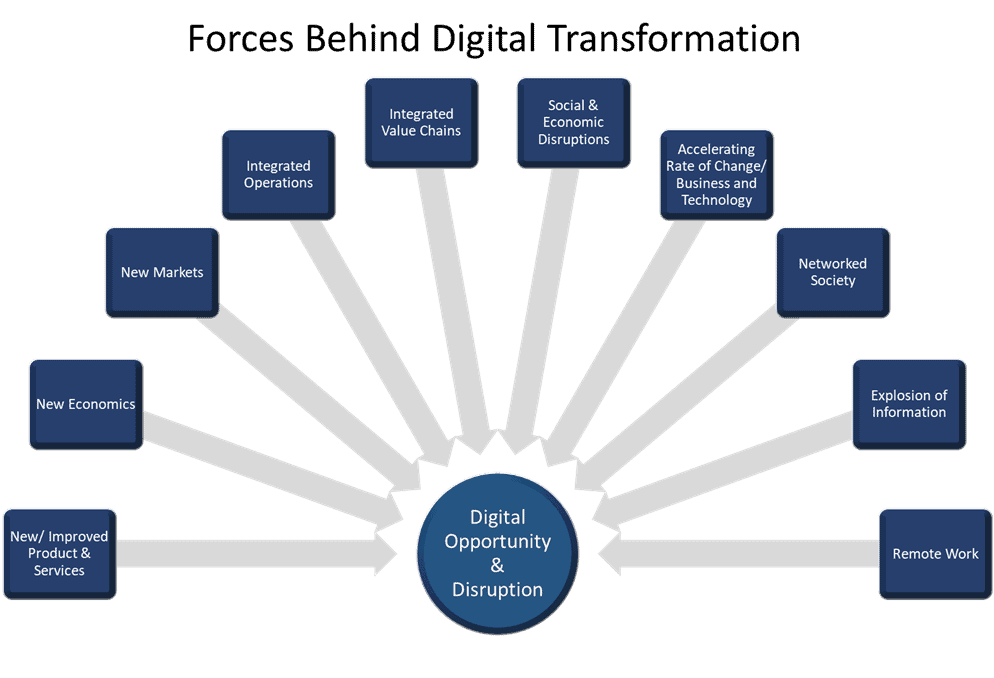Digital enterprise, strategy, and transformation have been in the corporate lexicon for decades, and it is still confusing as ever. Ask ten executives what it means, and you will likely get ten different answers. Search the web, and you will see a litany of technology that has already or will soon change the world. Ironically, digital encompasses all that and more.
The hype around technology often overshadows the value propositions and expansive nature of what the digital enterprise and transformation mean for society, consumers, and businesses alike.
The forces behind digital are pervasive, affecting industries and businesses in many ways. These digital forces can lead to disruption or opportunity concerning your revenues, margins, products/services, customers, and employees. Incidentally, many of these same forces can often complicate regulatory compliance.

While technology enables digital transformation through advances in applications, cloud computing, networks, big data, machine learning, AI, social media, and mobility; digital transformation’s real value lies in leveraging these digital forces and connecting interested parties in new ways that orchestrate (defined as the coordination of events and activities in a process at technical levels), automates, and simplifies desirable outcomes for all parties involved.
Technology aside, people and businesses benefit when digital transformation is applied to leverage the digital forces and connect interested parties in new ways. And that implies change for consumers, employees, and businesses alike to harness the value Digital transformation provides.
The rate of change with digital capabilities is not only staggering but disruptive to many industries and businesses. As we have all experienced, Covid-19 has touched upon a few of the digital forces in both positive and negative ways.
With technical advances unabated, digital’s potential to transform society, consumers, and businesses will continue to be profound. Value propositions of the digital forces and inter-connected relationships will constantly shift and evolve against the backdrop that transition to a digital enterprise is difficult. Therefore, digital interaction, orchestration, and automation should be at the heart of your ongoing product, services, operations, and customer strategies.
History teaches us that if it can be digitized, orchestrated, and automated, it will be.
Disruptor or disrupted, what is your Digital strategy?



